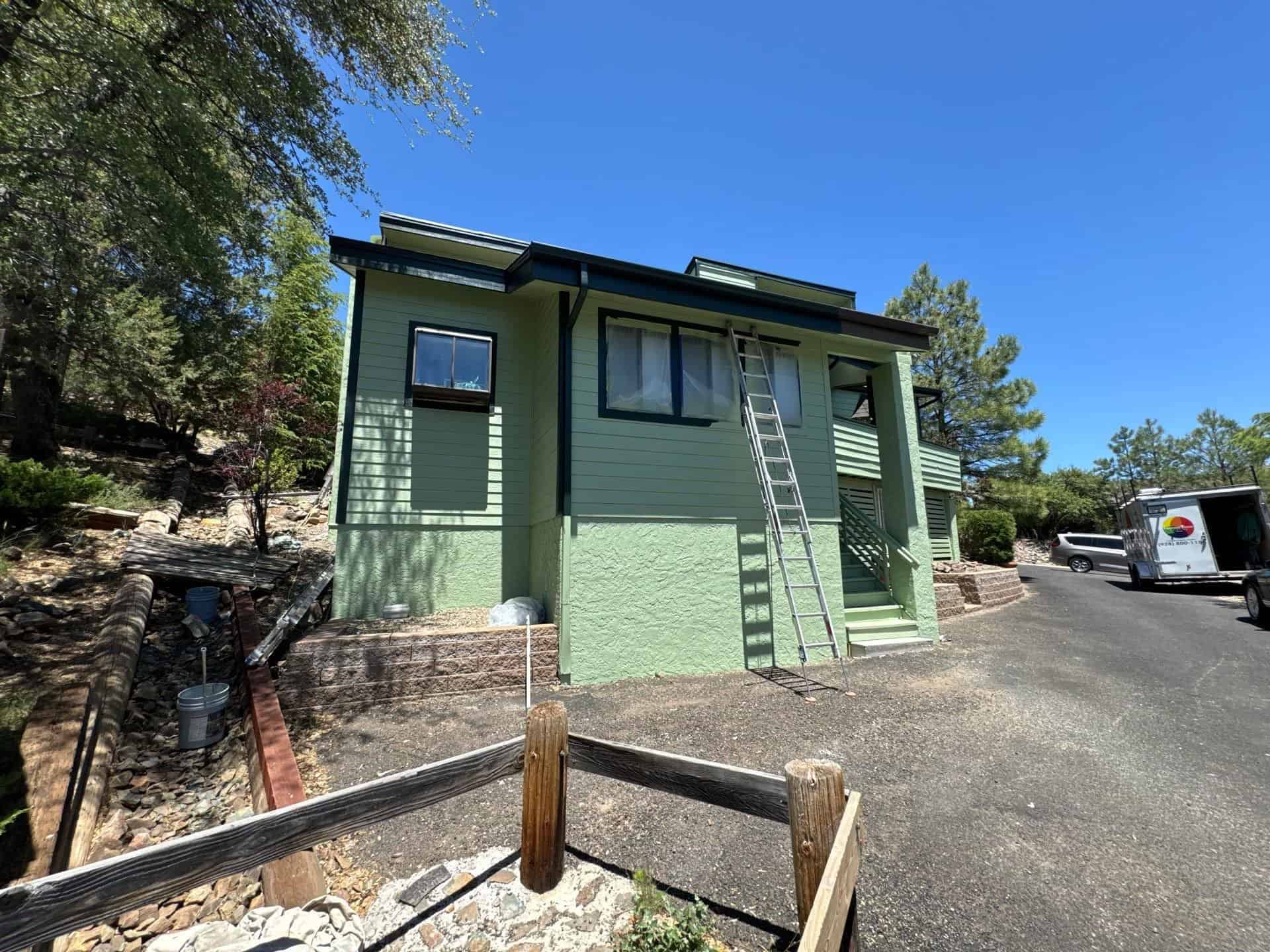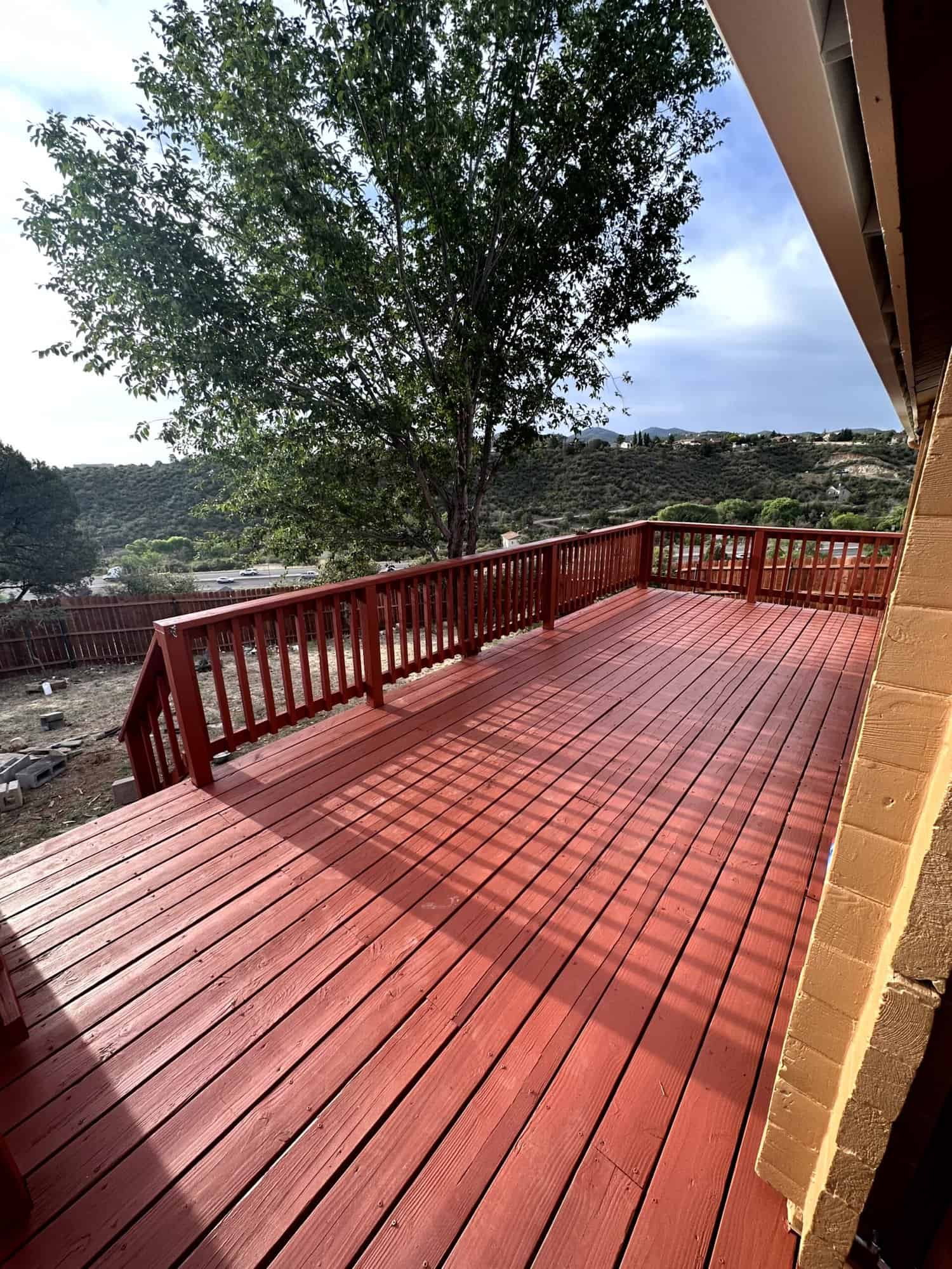Winter weather can be tough on outdoor structures like decks and fences. Freezing temperatures, moisture, and frost can cause wood to crack, warp, and rot if not properly maintained. For homeowners in areas with cold winters, understanding how to protect these structures is essential. In this blog, we’ll walk you through the best practices to keep your deck and fence looking great, no matter how harsh the winter gets.
Cold weather can be particularly unforgiving to wooden structures, as the natural fibers in wood contract and expand with temperature fluctuations. Metal components, like screws and nails, can also become compromised due to moisture exposure and freezing conditions. By taking proactive steps, you can avoid costly repairs and extend the lifespan of your deck and fence.
1. Clean Thoroughly Before the Cold Hits
Before winter arrives, give your deck and fence a thorough cleaning. Dirt, leaves, and debris can trap moisture, which leads to mold and mildew growth. When organic materials like leaves decompose on wood surfaces, they create a layer of grime that retains moisture and promotes decay.
Pro Tip: Use a pressure washer on a low setting to clean surfaces without causing damage. Follow up with a mildew-resistant cleaner for extra protection.
Cleaning your deck and fence not only improves appearance but also prevents long-term damage caused by trapped moisture. Make sure you let the wood dry completely before applying any protective coatings.
2. Apply a Protective Sealant
Cold weather can cause wood to expand and contract, leading to cracks and splinters. Applying a high-quality sealant helps protect against moisture infiltration. Sealants create a barrier that repels water while allowing moisture from within the wood to escape, reducing the risk of cracks and warping.
Did You Know? Sealants with UV protection can also prevent sun damage during those rare sunny winter days.
Apply the sealant when temperatures are mild—typically in early fall—to allow for proper curing. Oil-based sealants tend to offer more protection for harsh winter conditions, though water-based sealants dry faster and are more environmentally friendly.
3. Inspect for Damage and Make Repairs
Take the time to inspect your deck and fence for any signs of damage before winter sets in. Look for loose boards, nails, or cracks that need attention. Cracks in wood provide an entry point for moisture, which freezes and expands during cold weather, causing further damage.
Quick Tip: Pay special attention to areas that stay shaded and may collect more moisture.
Prompt repairs can prevent minor issues from becoming costly problems during freezing weather. To ensure structural integrity, replace damaged boards and tighten loose hardware.
4. Elevate Planters and Furniture
Keeping planters, furniture, and other objects off your deck helps prevent water from being trapped underneath. Moisture can lead to discoloration and promote rot, especially in areas where objects sit for extended periods.
Pro Tip: Use rubber or plastic risers to allow airflow beneath heavy objects.
Proper airflow reduces the risk of mold and mildew buildup, ensuring your deck stays dry and damage-free. If possible, store outdoor furniture in a shed or garage during the winter.
5. Avoid Using Salt or Harsh De-Icers
While it might be tempting to use salt to melt ice on your deck, it can cause damage to wood and corrode metal fasteners. Salt draws moisture into the wood, leading to long-term deterioration.
Better Option: Use calcium chloride or sand for better traction without harming your deck.
Always read the labels of de-icing products to ensure they are safe for wooden surfaces. Additionally, consider installing a non-slip mat in high-traffic areas instead of using de-icers.
6. Shovel Snow Carefully
Allowing snow to pile up on your deck can cause structural stress and increase moisture exposure. The weight of snow and ice can also weaken support beams and footings.
Shovel Smart: Use a plastic shovel with a non-metal edge to avoid scratching the wood.
Shovel along the direction of the boards to minimize the risk of damage. Removing snow after each snowfall prevents ice buildup and extends the lifespan of your deck.
7. Consider a Winter Cover
Investing in a weatherproof cover can provide an extra layer of protection for your deck. Covers prevent snow and ice from accumulating, reducing the workload during winter maintenance.
Tip: Make sure the cover is breathable to prevent moisture buildup underneath.
Covers are particularly useful for decks with expensive wood or intricate designs that are more susceptible to damage. Secure the cover properly to prevent it from being blown away by strong winter winds.
8. Maintain Proper Drainage
Water pooling around your deck or fence posts can cause severe damage when it freezes and expands. Poor drainage can also lead to frost heave, which destabilizes the foundation of your outdoor structures.
Quick Fix: Clear gutters and downspouts regularly to direct water away from these structures.
Ensuring proper drainage will protect the base of your fence and the foundation of your deck. Consider adding gravel or a French drain system if water pooling is a recurring issue.
9. Protect Metal Components
Metal fasteners, brackets, and screws can rust and weaken when exposed to moisture and freezing conditions. Corroded hardware can compromise the structural integrity of your deck and fence.
Maintenance Tip: Inspect metal components regularly and apply a rust-inhibiting spray when needed.
Choose stainless steel or galvanized hardware when replacing old parts, as these materials are more resistant to rust.
10. Schedule a Professional Inspection
Sometimes, hidden damage isn’t visible to the untrained eye. A professional deck and fence inspection can identify potential issues and recommend preventive measures.
Pro Tip: Schedule inspections in late fall to address any concerns before winter arrives.
Professionals can also apply advanced sealants and coatings for added protection.
The Science Behind Cold Weather Damage
Cold weather damages wood through repeated freeze-thaw cycles. When water penetrates the surface, it freezes and expands, creating microscopic cracks. Over time, these cracks grow, leading to warping, splintering, and structural weakness. Metal components contract during cold spells, loosening joints and increasing the likelihood of damage.
Understanding these processes helps homeowners implement effective protection strategies.
Conclusion: Keep Your Outdoor Spaces Looking Their Best
Cold weather doesn’t have to spell disaster for your deck and fence. With proactive maintenance, including regular cleaning, sealing, and careful snow removal, you can extend the life of these structures. Simple steps like clearing snow promptly, inspecting for damage, and using proper sealants make a significant difference.
Investing in professional maintenance services can also provide peace of mind, ensuring your deck and fence are prepared to withstand even the harshest winter conditions.
Need professional help? Contact us today for expert deck and fence maintenance services in Prescott, Chino Valley, and surrounding areas to protect your investment year-round!









